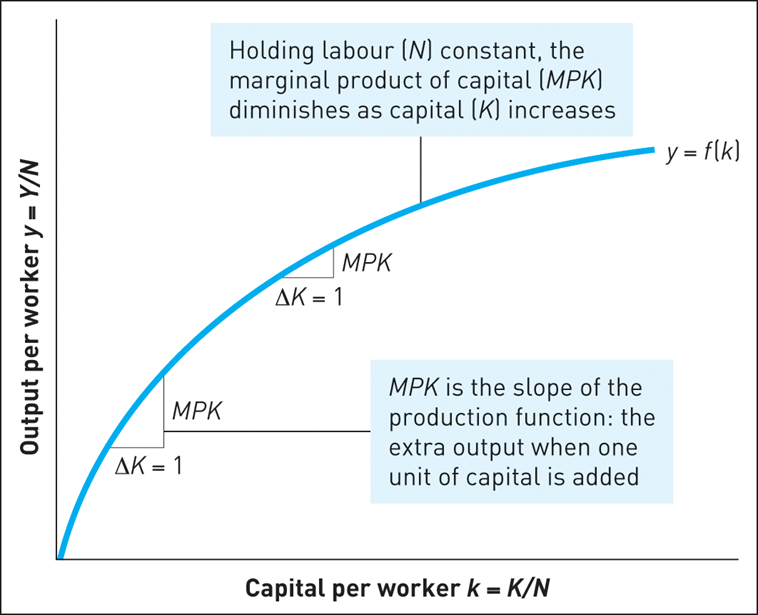lecture 27 - economic growth, productivity, and living standards, chap 19
1/23
There's no tags or description
Looks like no tags are added yet.
Name | Mastery | Learn | Test | Matching | Spaced |
|---|
No study sessions yet.
24 Terms
What is the relationship between Real GDP per person and living standards?
Real GDP per person correlates with life expectancy, infant health, and literacy. Higher production enables higher wages and purchasing power.
What is compound interest and why is it significant for economic growth?
Compound interest pays interest on both the original deposit and previously accumulated interest. Small differences in growth rates can lead to large variations over time, similar to how small changes in economic growth rates dramatically impact economies long-term.
What are the six factors that determine average labor productivity?
Human capital
Physical capital
Land and other natural resources
Technology
Entrepreneurship and management
Political and legal environment
What is human capital and why is it important?
Human capital comprises the talents, education, training, and skills of workers. It boosts productivity and innovation, leading to greater economic output.
what does physical capital enable?
Better capital (machinery, equipment, buildings) boosts worker productivity and quality. Countries with more capital per worker have higher labor productivity (GDP per worker). Physical capital boosts efficiency, reduces costs, and enables new products. Benefits include: higher output per worker, new capabilities, better infrastructure, and increased investment capacity
What is the principle of diminishing returns to capital?
As capital increases while other inputs remain constant, each additional unit of capital produces less output. When a firm adds more machines, they get used for increasingly less productive tasks since the best uses are already covered.
What is the Solow Growth Model's basic assumption about investment and saving?
The Solow Model assumes investment equals saving, which is a fixed portion of income Y. With I as investment, S as saving, and s as savings rate: I = S = sY
How does technology affect productivity in the Solow model?
Technical progress modifies the production function: y = Af(k), where A represents technology. Technology growth increases productivity across all capital-labour ratios, shifting the production function upward and driving higher investment, capital accumulation, and output per worker.
How does democracy promote economic growth?
Democracy indirectly promotes growth through multiple channels including better human capital, lower inflation, greater stability, and economic freedom. It strengthens education and healthcare systems, improving life outcomes.
What are the main costs of economic growth?
Reduced current consumption and leisure time
Health and safety risks from rapid production
Investment in R&D and education
What are the key challenges for promoting growth in less developed countries?
Countries need strong institutions and policies to support growth. Poor governance, excessive regulation, market inefficiencies, political instability, and corruption limit development and discourage investment.
formula to find the amount of interest gained?
amount deposited x interest (eg.1.04)^number of years
equation for real GDP per person
Y = real GDP
N = number of employed workers
POP = total population

what does real output/person depend on
How much each worker can produce.
The percentage of the population that is working.
What determines a nation’s economic growth rate?
In the long run, increases in output per person arise primarily from increases in average labour productivity.
capital to labor ratio
Capital stock depreciates over time as it wears out. To maintain the capital-labour ratio, investment must cover both depreciation rate (d) and population growth rate (n), requiring investment per head of (d+n)k.
equation for the marginal product
Y = output change
K = capital change
The marginal product measures output change when capital changes, with labor held constant.
MPK (marginal product of capital) decreases with more capital.

define production function
A production function shows how output Y relates to capital K and labor N: Y = F(K,N)
Constant returns to scale (CRS): When inputs K and N increase by proportion z, output Y increases by z
